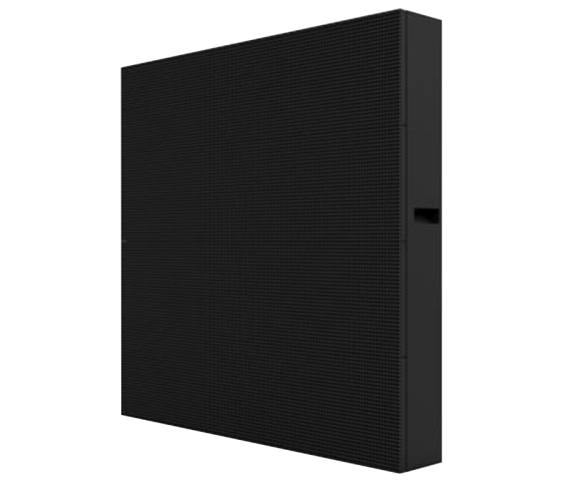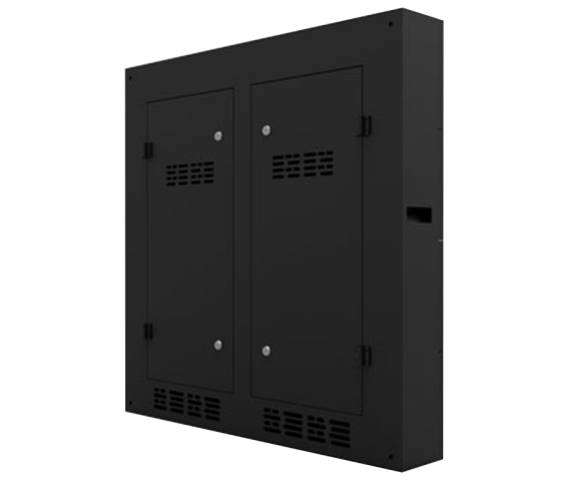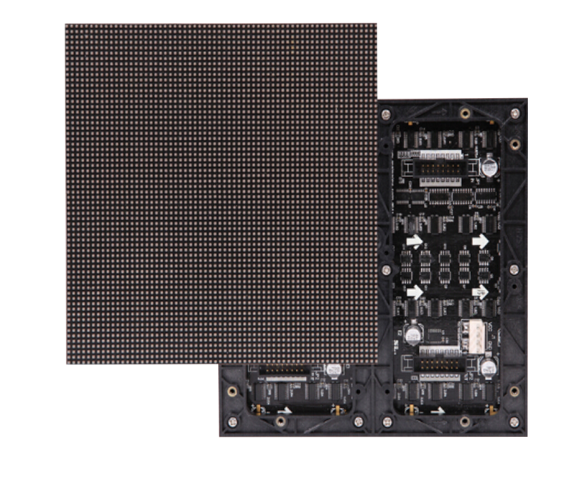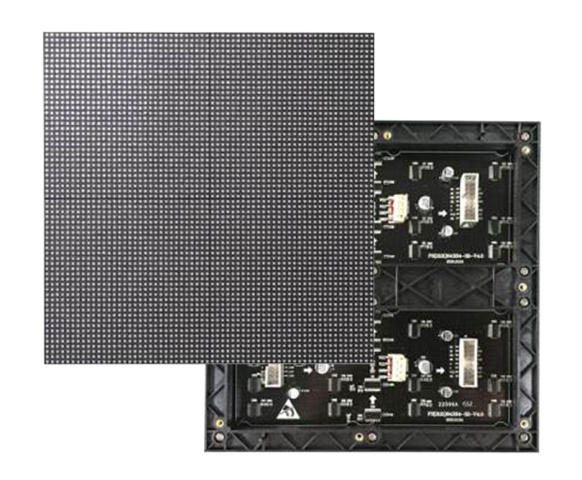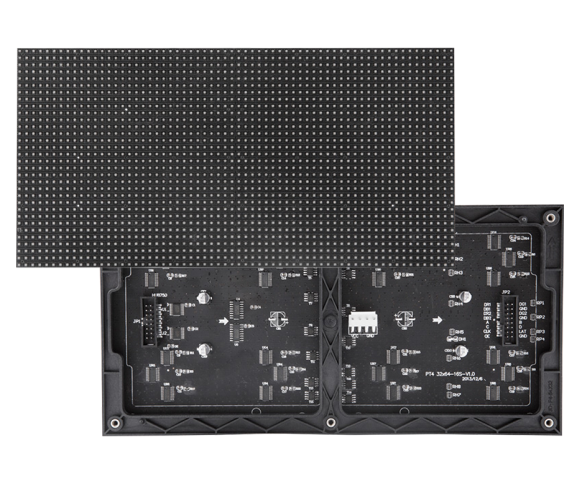Indoor LED Display
Key features
Indoor LED screen specifications
| ITEM | UNIT | 2.5 | 3 | 4 | 5 | |||
|---|---|---|---|---|---|---|---|---|
| LED Type | N/A | SMD2121 | SMD2121 | SMD2121 | SMD2121 | |||
| Pixel Pitch | mm | 2.5 | 3 | 4 | 5 | |||
| Ingress Protection | IP | 31, not water-proof, indoor installation only | ||||||
| Viewing Distance | meter | 2.5 | 3 | 4 | 5 | |||
| Driving Method | Scan | 1/32 | 1/32 | 1/16 | 1/16 | |||
| Module Size | mm | 320×160/160×160 | 192×192 | 256×128 | 320×160 | |||
| Module Pixel | pixel | 128×64/64×64 | 64×64 | 64×32 | 64×32 | |||
| Cabinet Size | mm | 640×640/480×480 | 576×576 | 512×512 | 640×640 | |||
| Cabinet Resolution | pixel | 256×256/192×192 | 192×192 | 128×128 | 128×128 | |||
| Module Maintenance | N/A | Front / back | ||||||
| Cabinet Material | N/A | Die-casting aluminum | ||||||
| Cabinet Weight | Kg | 14 | ||||||
| Brightness | CD | 500~800 | ||||||
| Refresh rate | Hz | 1920/3840 | ||||||
| Digital Processing | Bit | 14 | ||||||
| Gray Scale | level | 16384 | ||||||
| Colors | million | 687 | ||||||
| Color Temperature | Deg.K | 3,200-9,300 Adjustable | ||||||
| Brightness Control | N/A | 255 | ||||||
| Contrast Ratio | N/A | 4000:1 | ||||||
| Viewing Angle | Deg. | H:140/ V:140 | ||||||
| AC Speration | V | AC90~264 | ||||||
| Power Consumption(Max/Avg) | W/m2 | 800/250 | ||||||
| Storage Tem. | C | -20C ~ +60 | ||||||
| Storage Humidity | RH | 10% ~ 85% | ||||||
| Operating Tem. | C | -20C ~ +60 | ||||||
| Operating Humidity | RH | 10% ~ 85% | ||||||
| Lift time(50% brightness) | Hour | 100,000 | ||||||
| Installation Type | N/A | Stack, Hanging, Fixed, Wall mount | ||||||
| Control Mode | N/A | Video Sync | ||||||
| Video Effect | N/A | 2K, 4K | ||||||
The Ultimate Guide for Indoor LED Displays
Chapter 1: What is an Indoor LED display ?
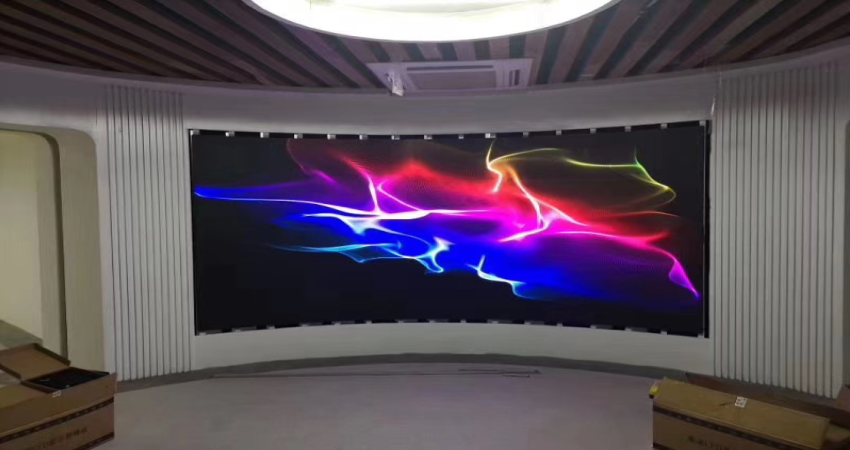
Technically,indoor LED display is a display device,which is used for displaying images and videos and designed for indoor use.Compared to Outdoor LED display,it has less brightness,non-waterproof and higher resolution.
Indoor signs do not have to compete with the unpredictability of outdoor weather conditions. Thus, Indoor LED Display are usually manufactured to be less bright.
Indoor LED displays are not exposed to the climate weather conditions elements, additional protections are not necessary.Thus,indoor LED panel are not waterproof.
Outdoor led Display are normally intended to be viewed from farther distances than their indoor counterparts, outdoor displays can rely on lower resolutions with very little compromise in terms of visibility. Indoor LED display that are intended to be viewed from shorter distances require higher resolutions to achieve picture with optimal quality.
Chapter 2: Indoor LED Panel Application .
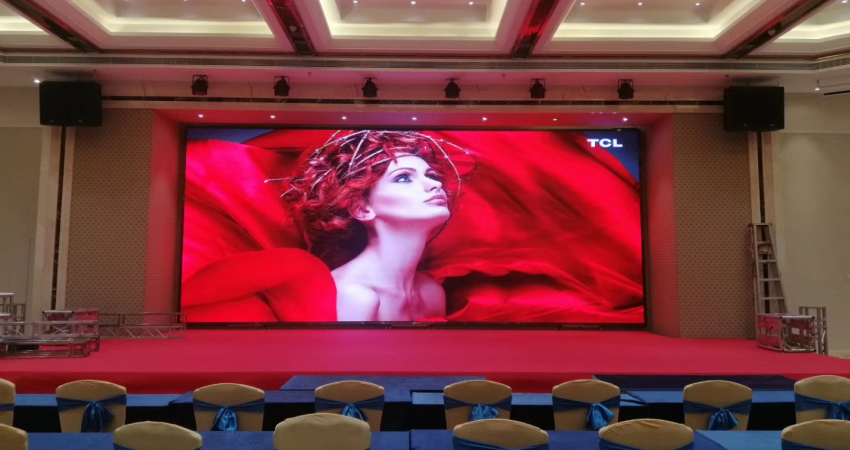
There are many ways to use indoor LED signs. Here are the most popular ones.
- Production in factories – you can use LED electronic displays to show the production information of the factory. This way, you can easily keep track of your production and do the necessary adjustments.
- Display for trading rooms/call centers – these LED signs can be used to display relevant information for people inside trading rooms to use. For example, stock values, time zones, calls on queue, etc…
- As a scoreboard – well this one’s pretty common too. LED scoreboards are commonly being used in any sports arena or any sports location.
- Retail purposes – retail businesses can use LED signs to promote their latest productions or any discounted ones.
- Reception boards – you can use floor-standing LED screens to welcome guests in your office, hotel or even in your own home.
- Entertainment – this is the simplest way you can use indoor LED screens. You can use it for personal use or for entertainment events like concerts, weddings and other events that can benefit from it. The possibilities are endless.
- Expos and exhibits – you can use these screens to display promotions in expos and exhibits. You can even use it to inform your guests about anything you want.
Chapter 3: How to Install Indoor LED Panel ?
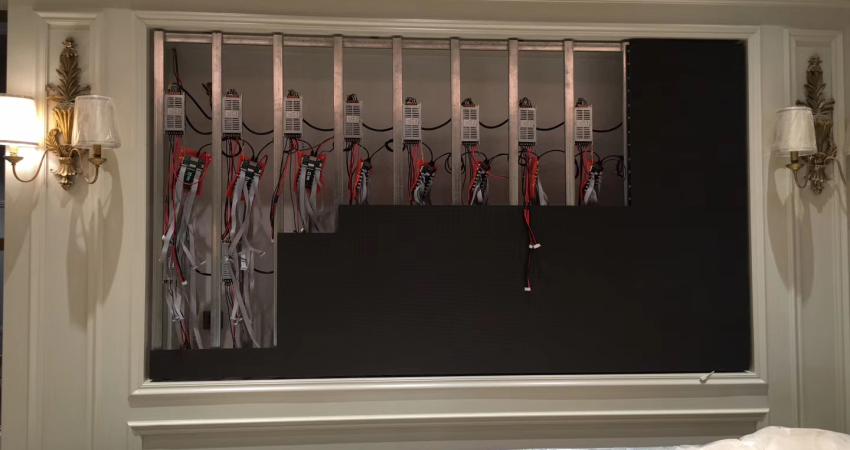
There are three ways to install the Indoor LED display.You can mount it on the wall,hang it or let it stand on the floor.
Wall Mounted Installation
This is the most common way of installing indoor LED panel.Firstly, you need to make a steel frame and fix it on the wall.This steel frame will hold the whole LED screen.You simplly need to attach the power supply,control card and LED module to the steel frame using the bolts and magnets.
Before the installation,one thing you need to be aware that the wall can bear the weight of the sign.
Hanging Installation
If you want to hang your LED sign, the first thing you need to make sure is that the location you will be hanging the LED sign on will be able to bear the weight.
Indoor LED signs usually come with locks and hanging bars to hold them into place. All you have to do is lock them into place with those locks and hanging bars on the metal hanger.
For this type of installation,it’s vital important to do an accurate calculations on the weight capacity of rigging and hanging bar before starting installation.Security first,a carelessness might lead to a disaster.
Standing on the Floor Installation
If you are going to install the rental LED display on the ground, you will need the stacking system.When you are installing the stacking system,you have to make sure the stacking frame is placed on the even ground.Otherwise,some gaps may appear on the LED screen and affect the image quality.
Remember that when you build a huge Rental LED display with ground stacking system,it has to be with enough weight load to prevent the LED display falling forward.
Chapter 4: What Do You Need to Consider before buying an Indoor LED display ?
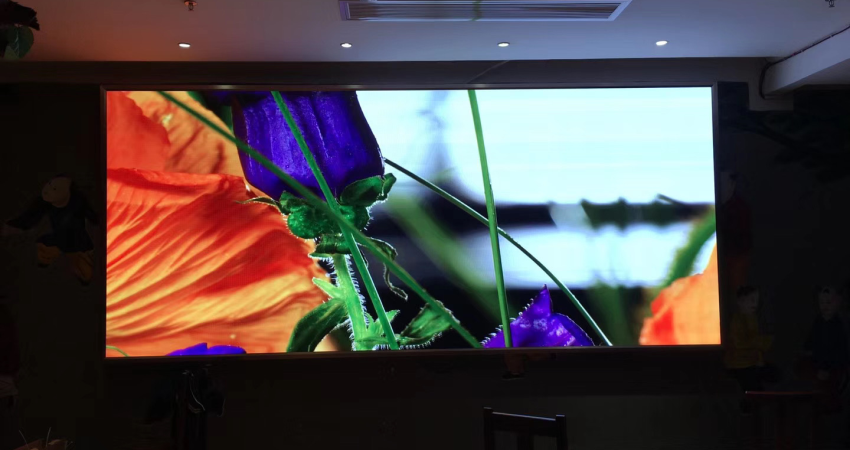
Before you go ahead and buy an indoor LED screen, there are exactly five factors you need to consider. These factors will dictate what type of indoor LED screen you will need to get.
- The first thing you need to consider is the view angle. You need to think about how the screen will be viewed by your audience. Does it need to be seen from any angle? Do you need a wider screen to display everything you will need? These is something you will need to consider.
- Brightness is another factor that you have to take into account. The standard brightness for indoor is 800-1200 nits, so you will need to make sure that the indoor LED screen you get is somewhere around that brightness range.
- Flatness is another thing you need to consider before buying an indoor LED screen. The standard flatness is ±1 mm. So make sure to ask if the LED screen falls under that standard. Normally, LED screens with die-cast aluminum cabinets are the best choice for indoor LED screens.
- You also have to consider the type of LED you want to use. There are two types of LEDs for indoor use. One is the white SMD LED and the other is the black SMD LED. The black SMD LEDs are used mostly for the pixel pitch which is lower than 5mm. If that’s the case, then it is best to choose the black LEDs.
- Lastly, you have to check if there are dead pixels. An LED screen is made up of many small pixel LEDs. So naturally, less dead pixels will result in a better display. There are ways to check if there are dead pixels. A simple internet search will lead you to several dead pixel tests you can do.
By making sure you consider these five factors, you will be able to choose the right indoor LED screen for your needs.

